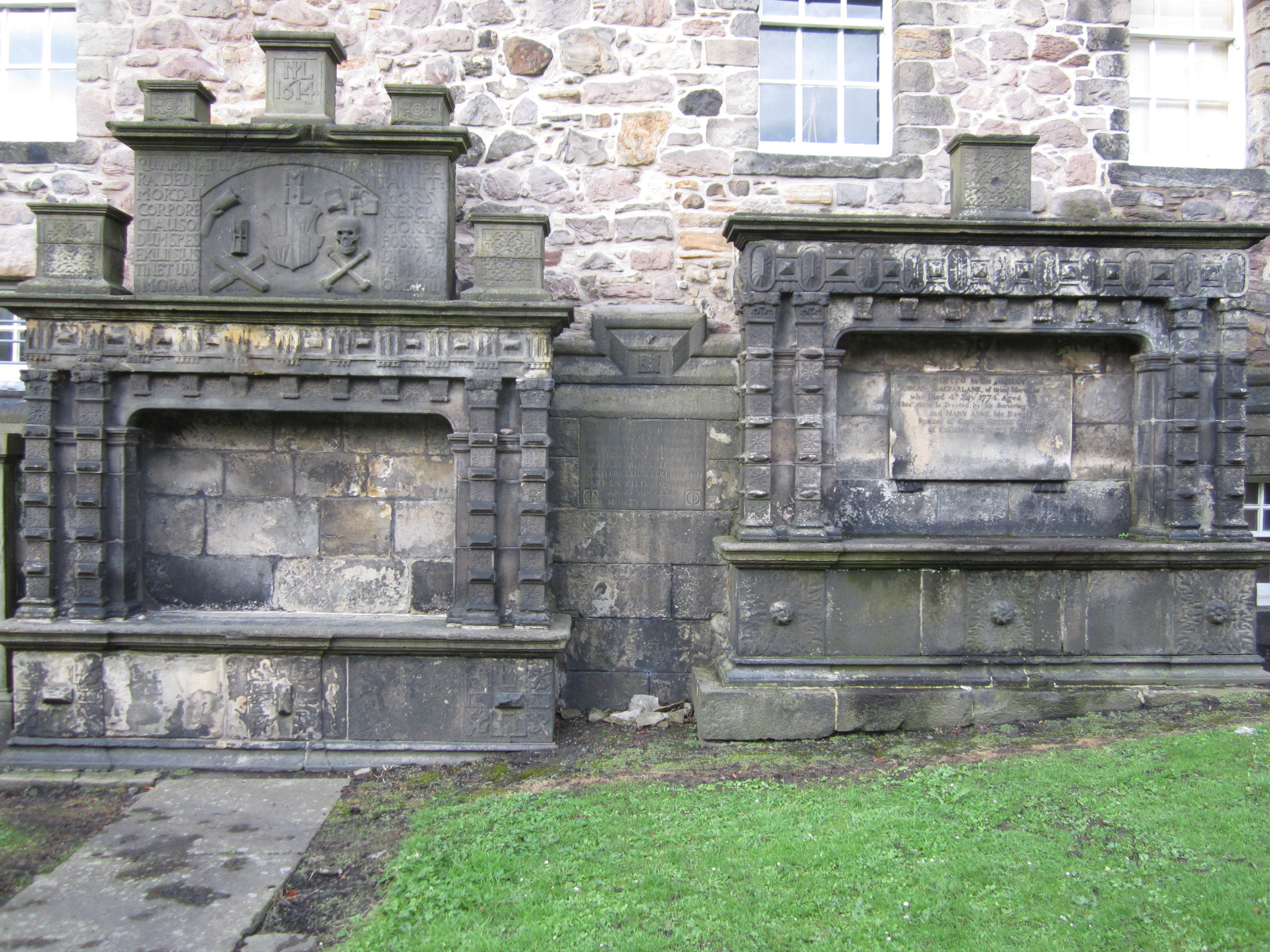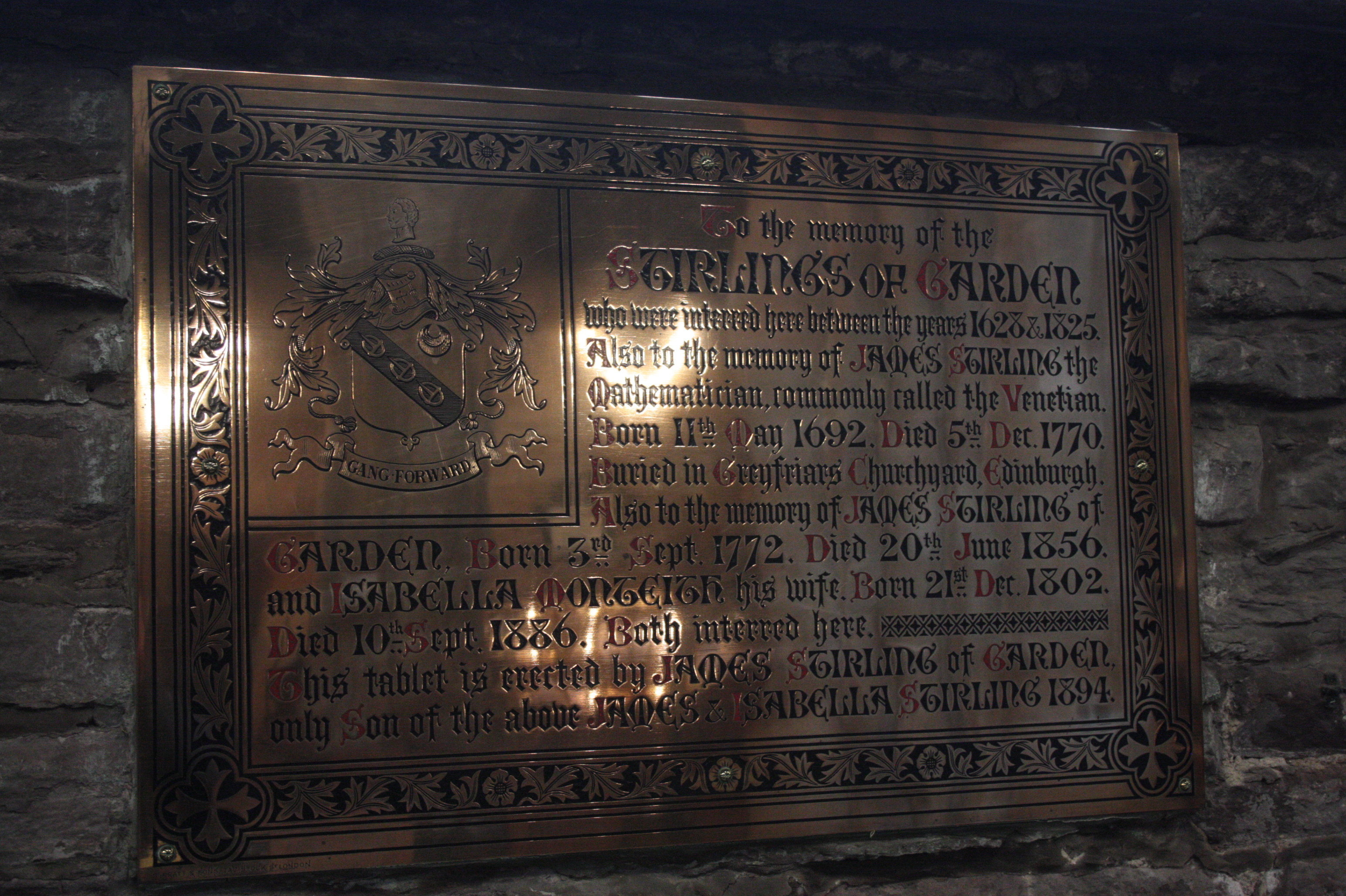1. Overview
James Stirling was a distinguished Scottish mathematician born in 1692. Often known as "The Venetian" due to his time spent teaching mathematics in Italy, he made significant contributions to both pure and applied mathematics. His work includes the publication of influential texts like Lineae tertii ordinis Newtonianae and Methodus differentialis, where he established foundational concepts in infinite series and verified Isaac Newton's classification of cubic plane curves. Beyond theoretical mathematics, Stirling was also a pivotal figure in applied science and engineering, notably managing the Scots Mining Company at Leadhills, designing water-powered air compressors, and conducting crucial surveying for the development of the Port of Glasgow. Several important mathematical concepts, such as Stirling numbers and Stirling's approximation, are named in his honor, underscoring his lasting legacy in the field.
2. Life
2.1. Birth and Family Background
James Stirling was born on 11 May Old Style (O.S.) 1692, at Garden House near Stirling, in Stirlingshire. He was the third son of Archibald Stirling (1651-1715) and Anna Hamilton. His grandfather was Archibald Stirling, Lord Garden (1617-1668). The Stirling family, including his father, were notable Scottish nobles.
2.2. Education
At the age of 18, Stirling matriculated at Balliol College, Oxford. In 1711, largely due to the influence of the Earl of Mar, he was nominated as one of Bishop Warner's exhibitioners, also known as a Snell exhibitioner, at Balliol. However, in 1715, he was expelled from the university because of his correspondence with his cousins, members of the Jacobite-sympathizing Keir and Garden families. These family members were implicated in the "Gathering of the Brig o' Turk" in 1708, an event associated with Jacobitism.
2.3. Early Career and Return
After his expulsion from Oxford, Stirling moved to Venice, Italy, where he found employment as a professor of mathematics. During his time in Venice, he published his first significant work in 1717, Lineae tertii ordinis Newtonianae, sive . . . (8vo, Oxford). He also communicated a paper titled "Methodus differentialis Newtoniana illustrata" to the Royal Society through Isaac Newton in 1718, which was published in the Philosophical Transactions. Around 1725, Stirling returned to London with the assistance of Newton, reportedly fearing assassination. This fear stemmed from his discovery of a closely guarded trade secret among the Venetian glassmakers. He resided in London for a decade, primarily associated with an academy in Tower Street, dedicating his free time to mathematics and corresponding with prominent mathematicians of his era.
3. Major Activities and Achievements
James Stirling's career was marked by significant contributions to both theoretical mathematics through his influential publications and practical applications in engineering and industrial management.
3.1. Mathematical Writings
Stirling authored two highly important mathematical works: Lineae tertii ordinis Newtonianae and Methodus differentialis.
His first major publication was Lineae tertii ordinis Newtonianae, sive illustratio tractatus d. Newtoni de enumeratione linearum tertii ordinis. Cui subjungitur, solutio trium problematum, published in Oxford in 1717. In this work, he rigorously proved the correctness of Isaac Newton's classification of cubic plane curves.
His most important work, Methodus differentialis, sive tractatus de summatione et interpolatione serierum infinitarum, was published in London in 1730. This treatise was a significant expansion of his earlier paper from 1718. It introduced the concept of Stirling numbers, which were used for the first time in this book. The Methodus differentialis provided methods for summing and interpolating infinite series, demonstrating his expertise in calculus and numerical analysis. Later editions of Lineae tertii ordinis were published in Paris in 1797, while another edition of Methodus differentialis appeared in London in 1764, and an English translation by Halliday was released in London in 1749. A substantial collection of his literary remains, including papers, letters, and two manuscript volumes of a treatise on weights and measures, are still preserved at Garden.
3.2. Applied Science and Engineering
In addition to his theoretical work, Stirling made notable practical contributions to applied sciences and engineering. In 1735, he was appointed manager for the Scots Mining Company at Leadhills, a significant mining operation. The Scots Mining Company House was constructed for him in Leadhills in 1736 and is currently designated as a cultural heritage site in the United Kingdom. His work extended beyond management to include innovative engineering designs. He communicated a paper to the Royal Society detailing a trompe, a type of water-powered air compressor used in Scottish lead mines.
Stirling's name is also connected with a major infrastructure project in Scotland. The city of Glasgow's accounts for 1752 record an initial expenditure of 28 GBP for a silver tea-kettle presented to "James Stirling, mathematician, for his service, pains, and trouble in surveying the river towards deepening it by locks." This acknowledges his crucial role in the surveying work for the development of Port Glasgow, a project that aimed to deepen the River Clyde for improved navigation and trade, eventually expanding to immense dimensions.
3.3. Mathematical Concepts and Theorems
Several fundamental mathematical concepts and theorems are directly associated with James Stirling's work:
- Stirling numbers: These are coefficients in mathematics, specifically in combinatorics, that arise in the study of permutations and combinations. They were first introduced by Stirling in his Methodus differentialis.
- Stirling's approximation: This is an asymptotic formula for approximating factorials, which states that for large `n`, `n!` is approximately `sqrt(2*pi*n) * (n/e)^n`. It is widely used in probability, statistics, and physics.
- Newton's classification of cubic plane curves: Stirling's Lineae tertii ordinis Newtonianae provided a rigorous proof for Isaac Newton's prior classification of cubic plane curves, confirming the correctness of Newton's work in this area of algebraic geometry.
4. Death
James Stirling died on 5 December 1770 in Edinburgh, Scotland. He was interred in Greyfriars Kirkyard in Edinburgh. His grave is marked by a small plate situated between two larger tablets.


5. Legacy
James Stirling's legacy is prominently recognized in the field of mathematics, where several key concepts bear his name. The Stirling numbers, essential in combinatorics and number theory, and Stirling's approximation, a fundamental formula for approximating factorials, are testaments to his profound theoretical contributions. His rigorous proof of Isaac Newton's classification of cubic plane curves further solidified his reputation as a meticulous and insightful mathematician. Beyond pure mathematics, his practical endeavors in mining management and civil engineering, such as his work on the Glasgow port and the design of the trompe, underscore his versatility and lasting impact on applied science and industrial development. His comprehensive approach, combining theoretical brilliance with practical application, ensures his enduring significance in the history of science.

6. Related Items
6.1. Related Mathematical Concepts
Stirling's work is connected to several other mathematical concepts and terms:
- Stirling polynomials
- Stirling transform